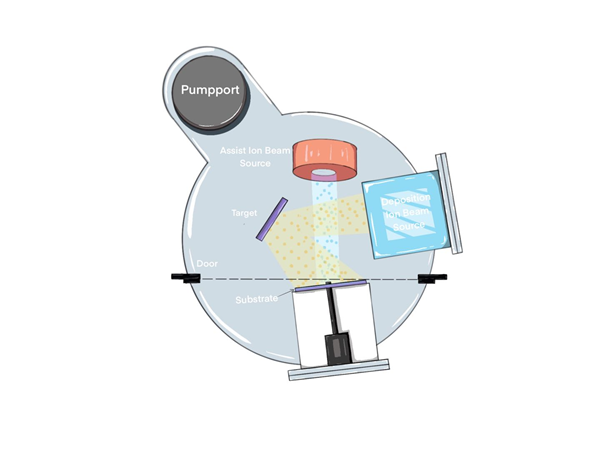
Location: Home / Technology / Core Technologies
Core Technologies
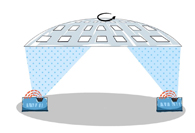
Because of the simple process and low price, traditional electron beam and thermal evaporation are widely used in the pr...
Learn More>>Because of the simple process and low price, traditional electron beam and thermal evaporation are widely used in the production of optical thin films. Thermal evaporation is generally applicable to film materials with a melting point lower than 1500deg. W \ TA \ Mo \ Nb \ Fe \ Ni \ Pt \ Cu and other materials are used as evaporation source materials. The film materials are placed on the evaporation source materials and heated to vaporize and overflow its atoms or molecules from the surface to form a steam stream, which is incident on the substrate surface and condensed into a solid film. The principle of electron beam evaporation is that after hot electrons are emitted from the filament, they are accelerated by the accelerating anode and get kinetic energy to bombard the evaporation material at the anode, so that the evaporation material is heated and vaporized to realize evaporation coating.
Electron beam evaporation can obtain much higher energy density than resistance heating source, thus evaporating high melting point materials; The film material is placed in the water-cooled copper crucible, which can avoid evaporation of the container material and reaction between the container material and the plating material, and improve the purity of the plating film; Heat directly acts on the surface of evaporation material, with high thermal efficiency and small loss of heat conduction and radiation.
Compared with other types of coating methods, the kinetic energy of the evaporation film material in the process of electron beam and thermal evaporation is relatively low, and the generated dielectric film layer will be porous, low density and columnar structure. On the one hand, because the film layer is porous, it absorbs water vapor and changes the refractive index of the film layer; The temperature and humidity of the storage environment or the use environment will bring changes in the spectral curve of the film. On the other hand, the low density structure reduces the mechanical properties of the film to some extent. This adverse effect is often eliminated by heating the substrate to a high temperature of several hundred degrees, but it cannot be completely eliminated. The process of heating also limits the type of substrate and introduces thermal stress in the film layer.
When the cost is considered and the reliability of the film is not high, the electron beam and thermal evaporation process are often considered. Another advantage of the thermal evaporation process is that a wide range of evaporation materials can be selected, from metal materials to semiconductor materials to dielectric materials; It can be used from fluoride to oxide.
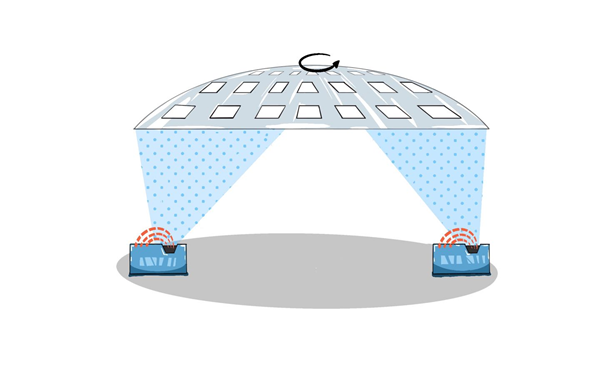
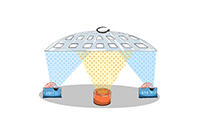
Under the vacuum condition, the gas is ionized by gas discharge, and the evaporated substance or its reactant is evapora...
Learn More>>Under the vacuum condition, the gas is ionized by gas discharge, and the evaporated substance or its reactant is evaporated on the substrate while the gas ion bombards. Ion assisted deposition is actually based on electron beam evaporation, introducing ion bombardment to increase the kinetic energy of the evaporated film. Compared with electron beam and thermal evaporation, the film has higher density. In addition, the gas ion beam can be used to clean and etch the substrate surface, thereby enhancing the firmness of the film layer.
By introducing ion assistance, the film has higher firmness, better mechanical properties, better environmental reliability and lower film scattering.
However, ion assisted deposition is not applicable to all materials, for example, MgF2 may be decomposed during deposition.
Compared with EB process, cost, spectral stability and reliability are comprehensively considered.
Compared with IBS process, it has higher scattering and absorption loss.
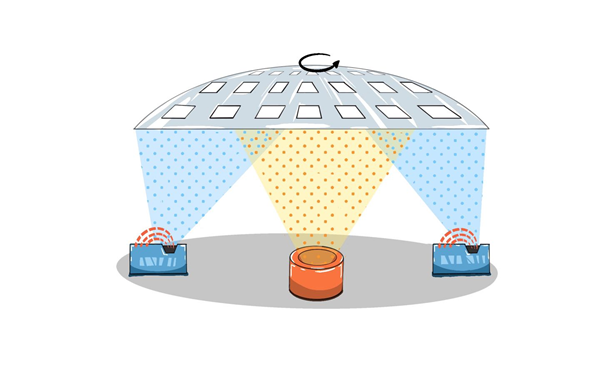

The secondary electrons emitted from the target surface, under the combined action of the electric field force and the m...
Learn More>>The secondary electrons emitted from the target surface, under the combined action of the electric field force and the magnetic field force that are perpendicular to each other, make a spinning wheel linear jump across the magnetic field line along the runway, and circle along the runway in this form, increasing the chance of collision with gas atoms. It overcomes the disadvantages of two pole and three pole sputtering.
The secondary electron cycle movement with low energy increases the chance that each electron ionizes the atom. Only after the energy of the electron is exhausted can it leave the target surface and fall on the anode. The reason for low substrate temperature rise and small damage.
The high-density plasma is bound near the target surface by the electromagnetic field and does not contact the substrate.
The working pressure can be reduced to the order of 10-1 ~ 10-2Pa by improving the ionization efficiency; So as to reduce the scattering effect of the working gas on the sputtered atoms, improve the deposition rate and increase the firmness of the film.
When magnetron sputtering is performed, the collision probability between electrons and gas atoms is high, so the gas ionization rate is greatly increased.
Low temperature sputtering: directly cooling the sputtered target material; The magnetic field is used to reduce the electron energy and the electron trap is used to eliminate the bombardment of electrons on the substrate.
High speed sputtering: try to increase the power input to the target; Improve the power efficiency of sputtering deposition; Reducing the back diffusion of sputtered atoms or molecules to the target.


The ions emitted by the ion source are extracted, accelerated and focused to form a beam. The target placed in the high ...
Learn More>>The ions emitted by the ion source are extracted, accelerated and focused to form a beam. The target placed in the high vacuum chamber is bombarded with the ion beam, and the sputtered atoms are coated. Oxygen is introduced into the cavity and reacts with the metal gas to realize the oxide film. Due to the high-energy process introduced by ion beam sputtering deposition, a film layer with good consistency, high density, amorphous structure and excellent firmness is formed, which brings excellent environmental stability and mechanical durability. The film produced by IBS has good roughness and small scattering loss.
Compared with other types of deposition methods, due to the characteristics of slow deposition rate and high control accuracy, it is often used to generate products with high-precision spectral requirements, such as GFF.
However, the disadvantage of IBS is that it has some limitations on evaporation materials and can only be used to process metal oxides; And the processing cost is high.
